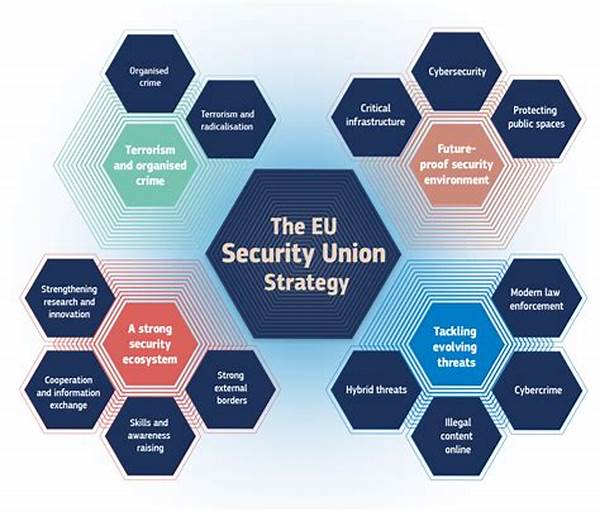The landscape of European security and defense has evolved significantly in response to contemporary challenges. The European security and defense strategy is a comprehensive framework aimed at enhancing the continent’s resilience against external threats. It is rooted in collaborative efforts among member states, emphasizing the significance of collective security, and underscores the necessity for a robust, adaptable approach to both conventional and unconventional security concerns.
The Importance of a Unified European Security and Defense Strategy
The need for a unified European security and defense strategy has never been more pressing. In an era marked by geopolitical tensions, cyber threats, and transnational terrorism, European nations recognize their interdependence in defending their security interests. The strategy fosters cooperation among member states, leveraging shared resources to strengthen defense capabilities across the continent. This cooperation not only enhances military readiness but also ensures a coordinated response to potential threats. The strategy further outlines the role of the European Union in facilitating dialogue among members and providing a platform for unified action.
Moreover, a comprehensive European security and defense strategy serves as a deterrent against potential aggressors. By presenting a united front, Europe signals its readiness to defend its territorial and strategic interests. This unity is crucial in an increasingly multipolar world where non-state actors and regional conflicts pose significant risks. The strategy emphasizes the importance of adaptable, coordinated efforts in the face of evolving threats, ensuring the safety and stability of the European region.
Key Components of the Strategy
1. Collective Defense Mechanism: At the core of the European security and defense strategy is a commitment to mutual defense, ensuring that an attack on one member state is considered an attack on all.
2. Cybersecurity Initiatives: With the rise of digital threats, the strategy prioritizes robust cybersecurity measures to protect critical infrastructure and sensitive data across Europe.
3. Crisis Response Coordination: The strategy includes mechanisms for rapid deployment of forces to manage and mitigate crises, both within and outside Europe’s borders.
4. Collaborative R&D Efforts: Investment in research and development of defense technologies is encouraged to maintain a competitive edge in defense capabilities.
5. Integrated Border Management: Strengthening the security of Europe’s external borders is vital, with a focus on preventing illegal crossings and trafficking.
Historical Context and Evolution
The European security and defense strategy has a complex historical background, rooted in the aftermath of World War II and the Cold War. Initially, European defense efforts were largely overshadowed by NATO’s influence, but the establishment of the Common Security and Defense Policy marked a shift towards an autonomous European strategy. This evolution signifies Europe’s acknowledgment of its unique security needs and the necessity for a dedicated framework to address them. Over time, the strategy has expanded to encompass a broad spectrum of security issues, reflecting the changing nature of threats in the modern world.
As geopolitical circumstances have shifted, so too has the European approach to security. The inclusion of cyber defense and border management highlights the strategy’s adaptability. By evolving to meet contemporary challenges, the European security and defense strategy underscores its relevance and importance in maintaining peace and stability in the region.
Challenges and Opportunities
The European security and defense strategy faces several challenges, including differing national interests among member states and budgetary constraints. However, it also presents opportunities for enhanced cooperation and strategic investment.
1. Policy Alignment: Achieving consensus on defense policies among diverse member states is challenging, yet essential for effective implementation of the strategy.
2. Resource Allocation: Adequate funding is critical to sustain and expand defense capabilities, posing both a challenge and an opportunity for innovation in budget management.
3. Technological Advancements: Embracing technological advancements can significantly augment defense strategies and capabilities throughout Europe.
4. Cross-Border Collaboration: Strengthening partnerships with non-EU countries can enhance the strategy’s effectiveness, ensuring comprehensive security across the region.
5. Public Perception: Gaining and maintaining public support for the strategy is vital for its long-term success and sustainability.
6. Inter-agency Coordination: Streamlining communication and coordination between various defense and security agencies is critical for operational efficiency.
7. Crisis Preparedness: Enhancing rapid response capabilities ensures readiness in the face of emerging threats, strengthening the overall strategy.
8. Legal and Ethical Considerations: Balancing security needs with legal and ethical standards is essential to uphold the values upon which the European Union is founded.
9. Training and Development: Investing in the continuous training and development of defense personnel ensures the effective implementation of the strategy.
10. Environmental Challenges: Addressing environmental challenges and incorporating sustainability into defense planning is increasingly important in the modern context.
Future Prospects of the European Security and Defense Strategy
Looking ahead, the European security and defense strategy is poised for further development, particularly in areas such as artificial intelligence and space security. As technologies evolve, so too must the strategies that safeguard European interests. Continued investment in innovation is essential to maintain a competitive advantage in defense capabilities. With the growing complexity of global threats, Europe must remain vigilant, and its strategy must reflect the multifaceted nature of modern security challenges.
The future of the European security and defense strategy relies on sustained political will and unity among member states. By reinforcing collective defense measures and enhancing strategic partnerships, Europe can navigate the uncertainties of the future. The strategy’s adaptability and resilience will be key to ensuring that Europe remains secure, stable, and prosperous in the years to come.
Conclusion
In conclusion, the European security and defense strategy is a vital component of Europe’s efforts to safeguard its interests in a rapidly changing world. By fostering cooperation and leveraging shared resources, Europe enhances its ability to respond to a wide range of security challenges. As the strategy continues to evolve, it reflects the continent’s commitment to ensuring peace, stability, and resilience against external threats. The collective effort of European nations underlines the importance of unity and adaptability in addressing the complex landscape of modern security.





